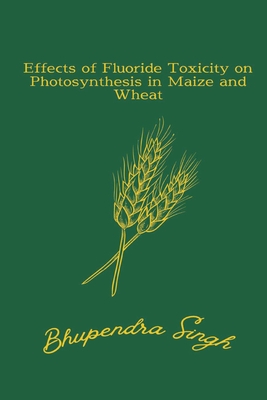
Effects of Fluoride Toxicity on Photosynthesis in Maize and Wheat
Description
Fluoride toxicity refers to the negative effects of excessive levels of fluoride ions in the soil, water or atmosphere on plants. In maize and wheat, high levels of fluoride can disrupt the process of photosynthesis, which is essential for plant growth and productivity.
Photosynthesis is the process by which plants use sunlight, water, and carbon dioxide to produce oxygen and glucose. Fluoride toxicity can affect different stages of photosynthesis, including the absorption of light energy by chlorophyll, the electron transport chain, and the production of ATP and NADPH.
In maize and wheat, the effects of fluoride toxicity on photosynthesis can manifest in different ways, such as reduced chlorophyll content, lower rates of carbon fixation, and decreased activity of enzymes involved in photosynthesis. These effects can lead to stunted growth, reduced biomass, and lower crop yields.
Moreover, fluoride toxicity can also disrupt the balance of nutrients in plants, which can further exacerbate the negative effects on photosynthesis. For example, high levels of fluoride can interfere with the uptake and transport of essential nutrients like phosphorus, potassium, and calcium, which are crucial for plant growth and development.
Overall, the effects of fluoride toxicity on photosynthesis in maize and wheat can have significant implications for food security and agricultural sustainability. Understanding the mechanisms underlying fluoride toxicity and developing strategies to mitigate its effects on plant growth and productivity is, therefore, critical for ensuring global food security.
Environmental pollution is one of the most serious global challenges. Fluoride (F-) has
been identified as a toxicant in the environment. Fluoride pollution is not a new problem.
Fluoride contamination in water, soil and air or all the three has substantial influences on
the environment .
Plants are exposed to a number of contaminants, which differ in concentration,
speciation, and toxicity. Fluoride, when taken up by plants has proven to be toxic, and
has notable adverse effects on crop productivity and growth. These contaminants
primarily enter the plant system through soil or through the atmosphere .
Plants synthesize sugar from carbon dioxide (CO2) and water (H2O) with the aid of solar
energy. It is called oxygenic photosynthesis because one of its products is molecular
oxygen. Water molecules are split into oxygen by oxygenic photosynthesis, which is
necessary for aerobic life on Earth .
Oxygenic photosynthesis is a complicated process where several simultaneous pathways
interact with each other to culminate in the reduction of inorganic carbon, which in turn
is transformed into organic molecules to form cellular components. The photosynthetic
machinery has developed mechanisms for efficient light harvesting, water oxidation,
NADP+ reduction, and ADP phosphorylation; these processes are collectively referred to
as the light-dependent reactions.
